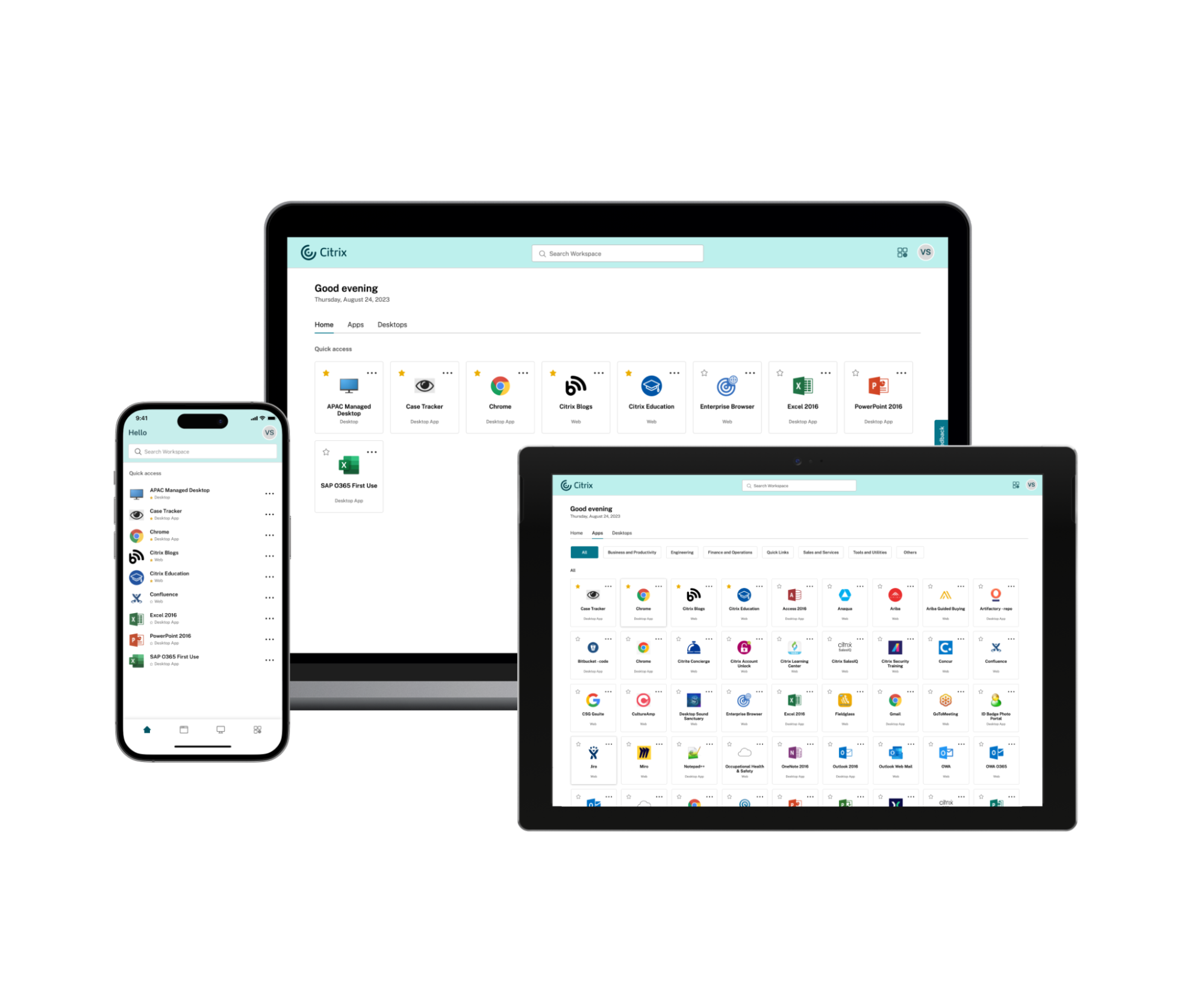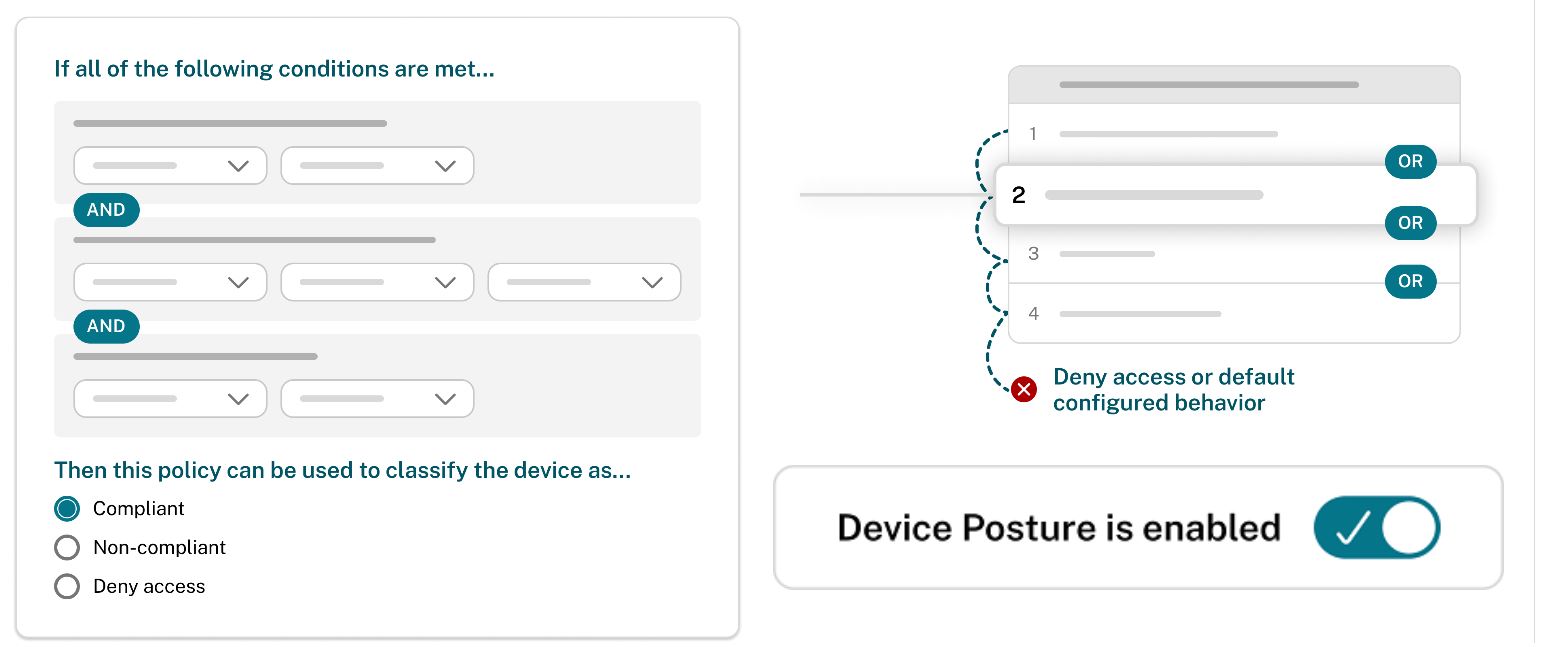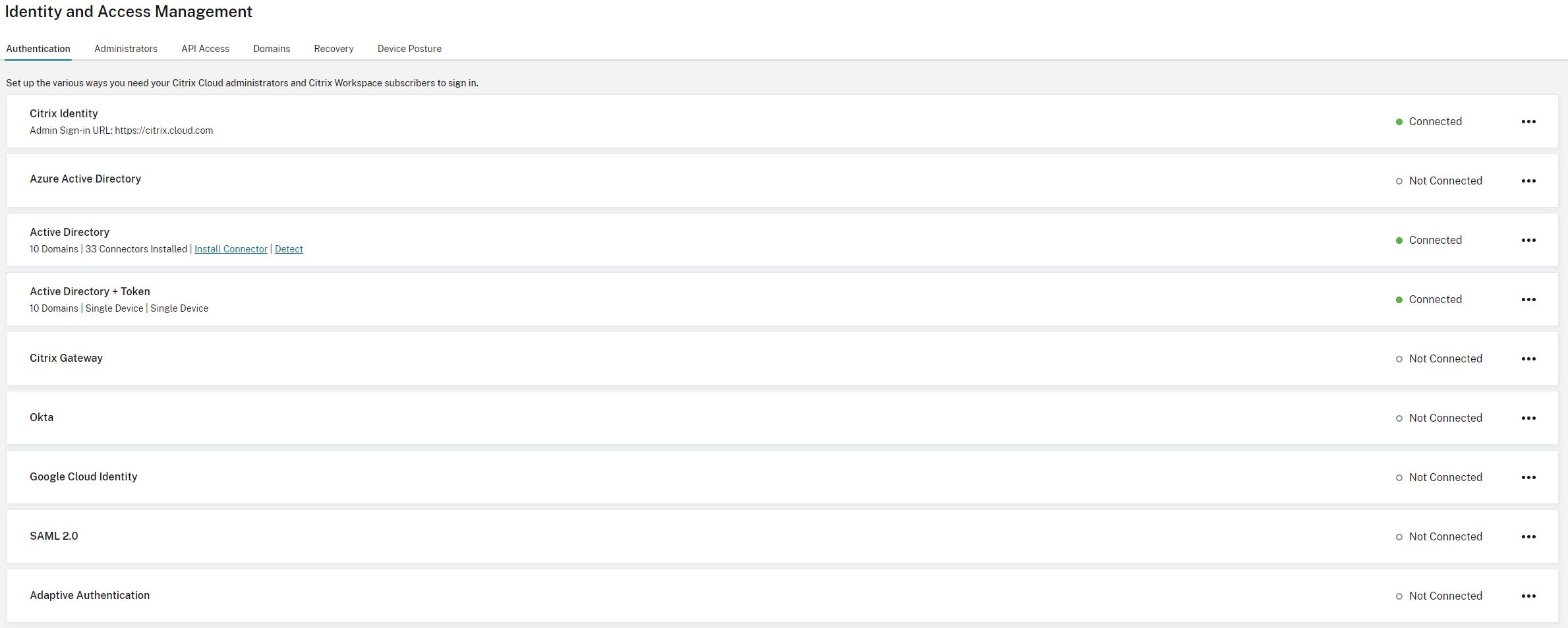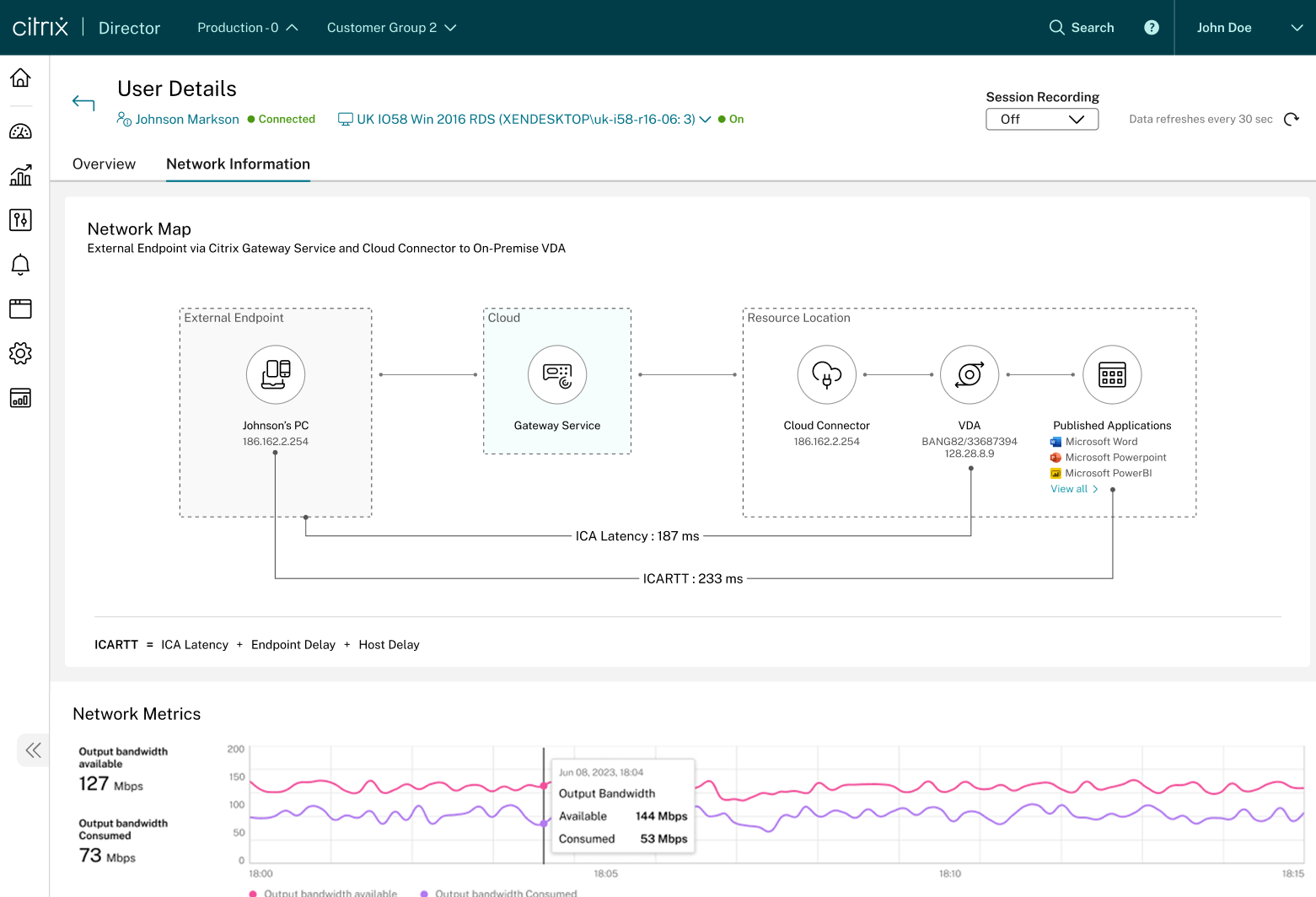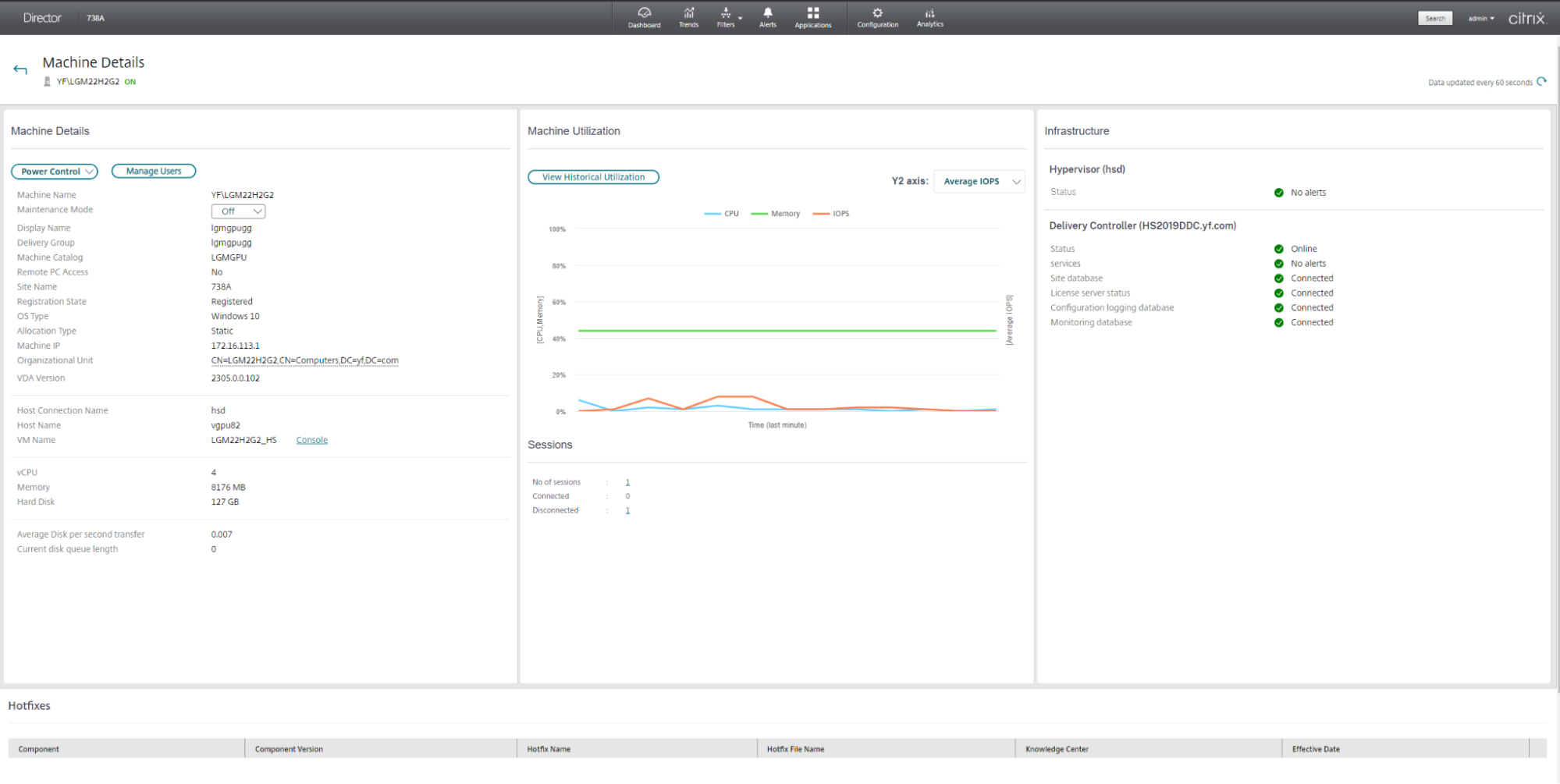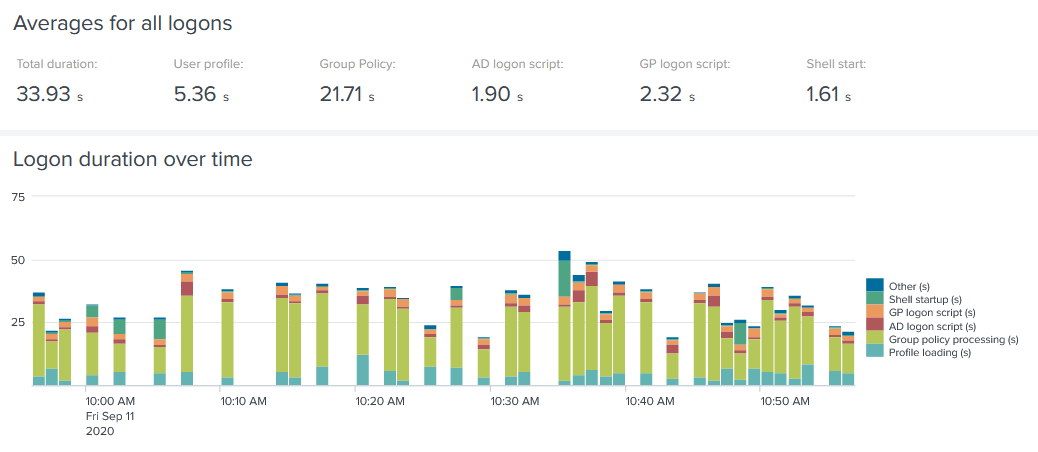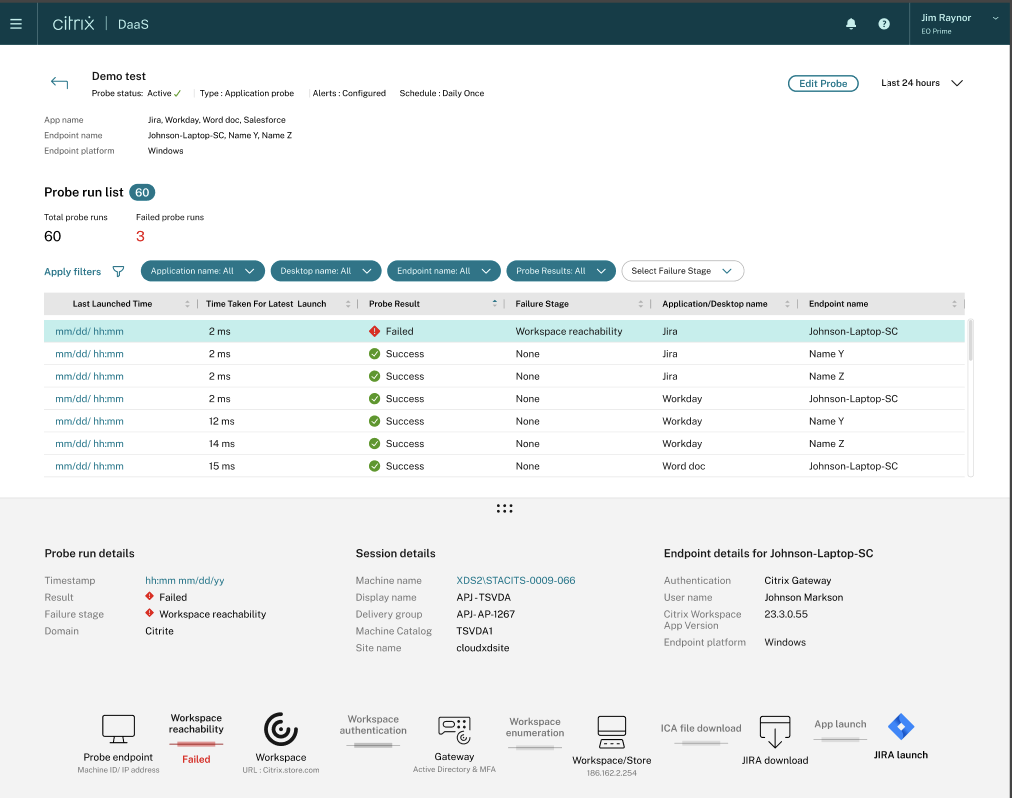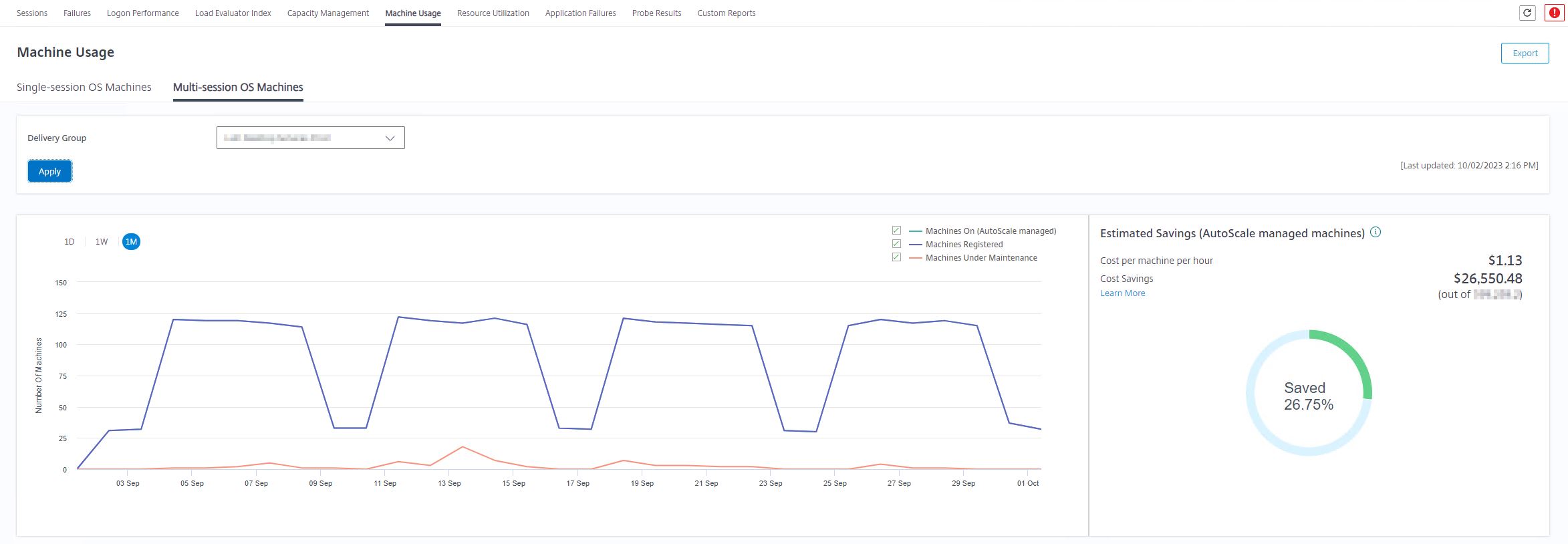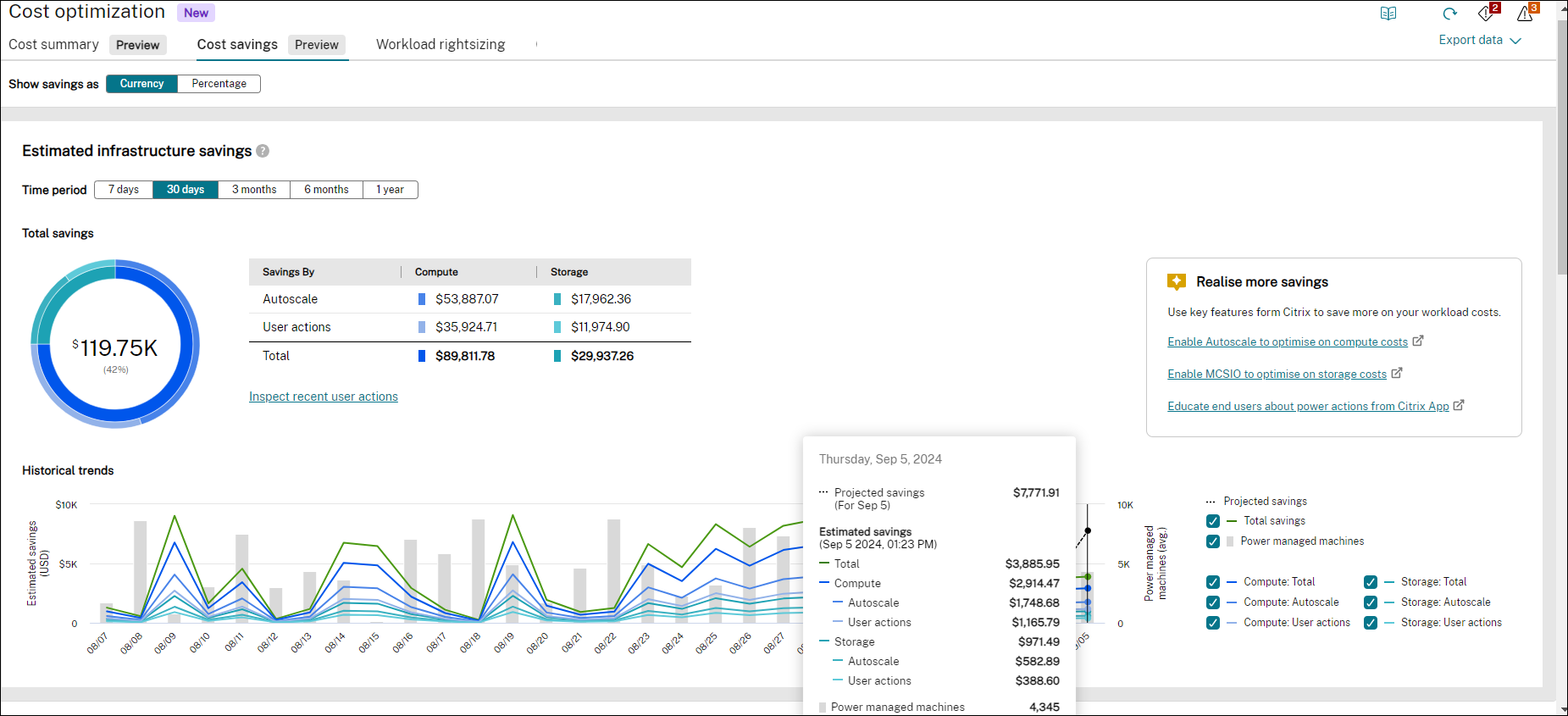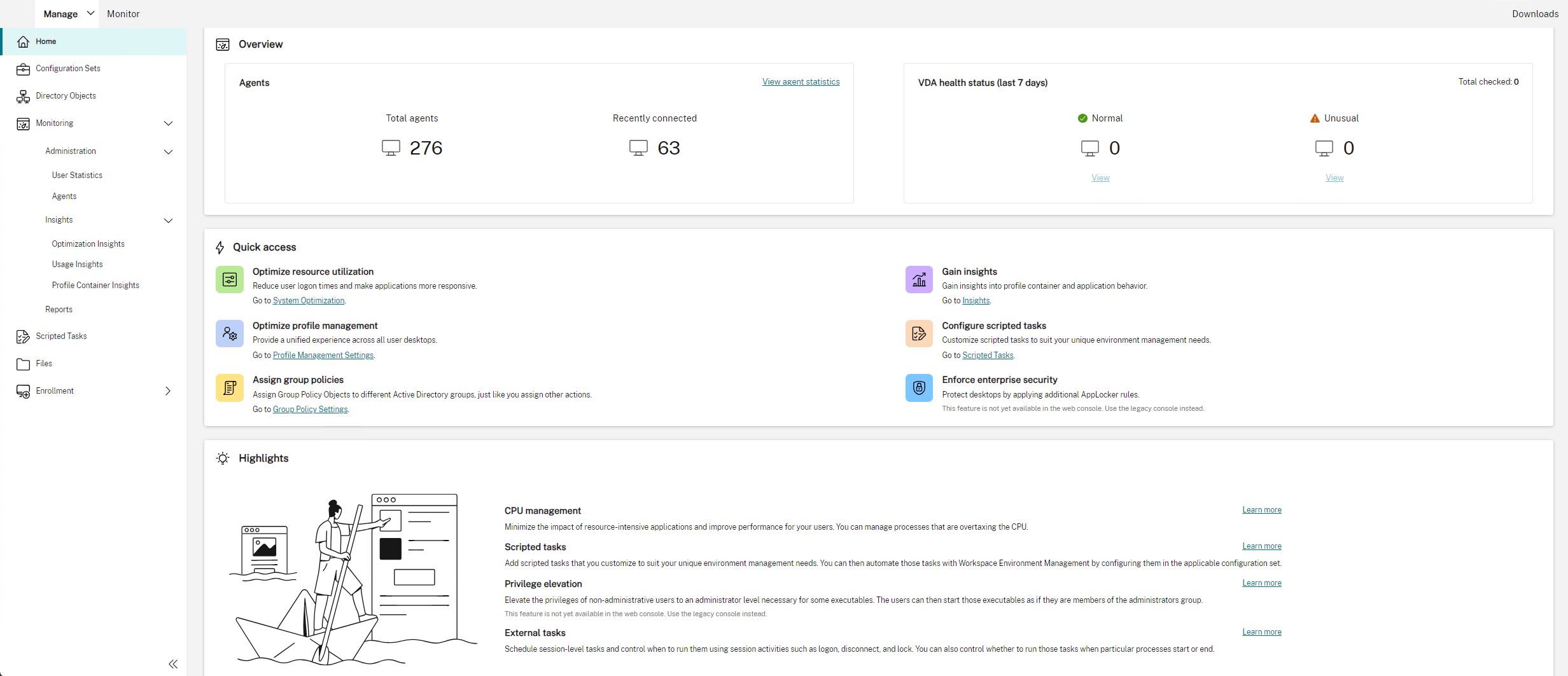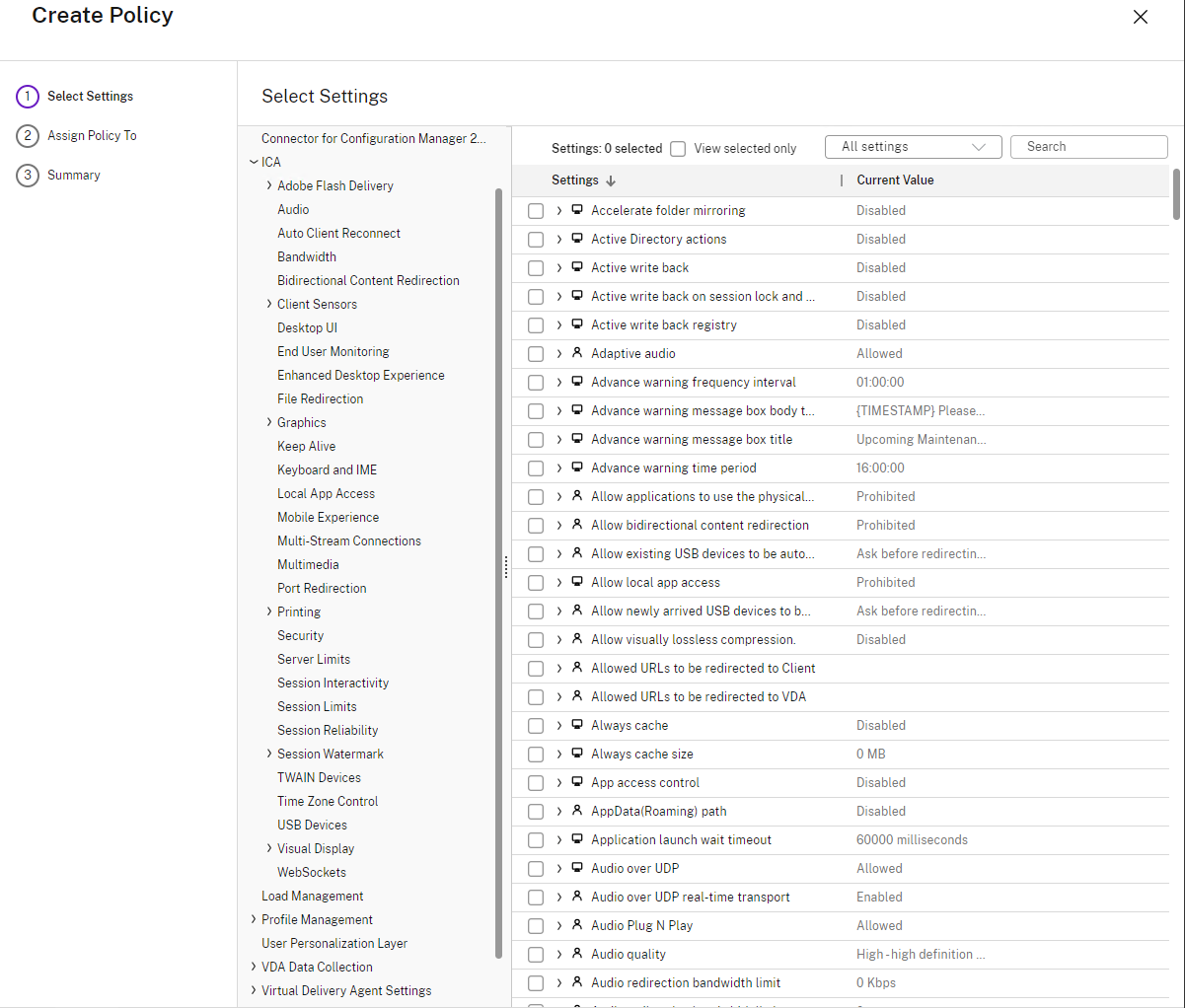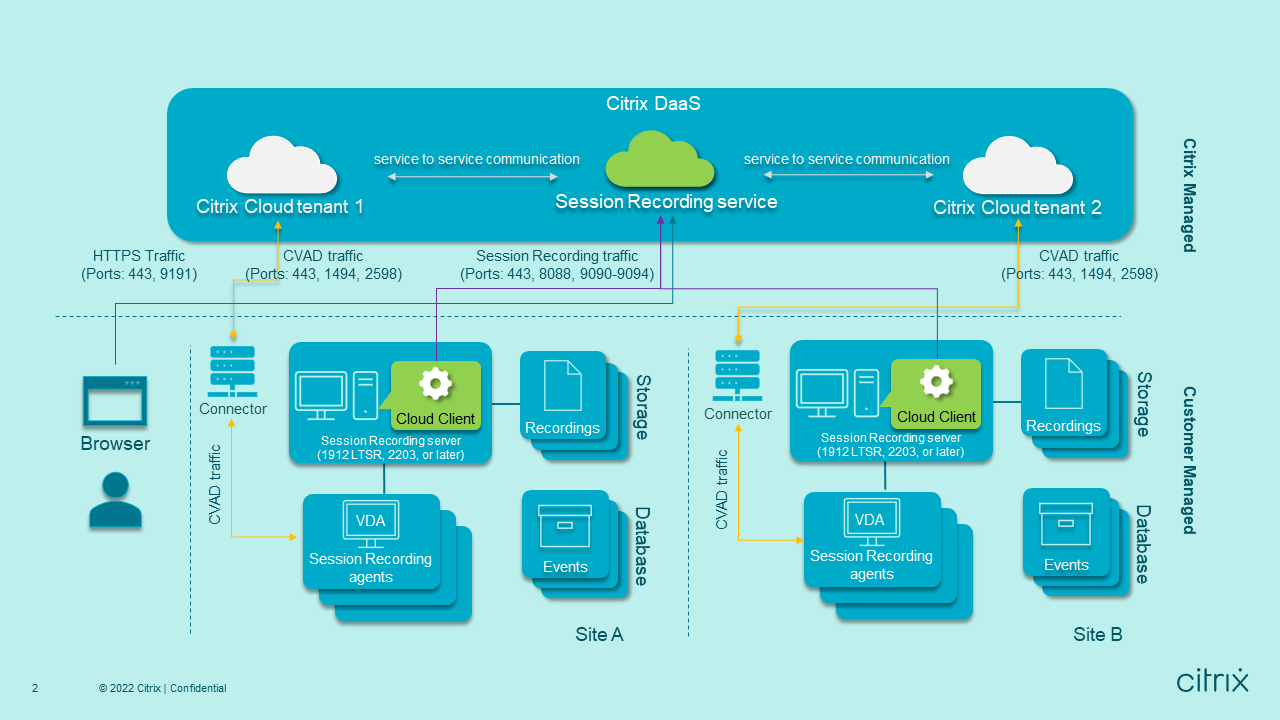Finding the value in your Citrix investment in 2025

A 2025 update to finding the value in your Citrix investment
- Intro - The 2025 Update
- Citrix Acquisitions of Note
- Background Intro
- Citrix DaaS and CVAD are platform-agnostic
- Citrix Operating System Support including Remote PC Access
- Citrix Provisioning and Lifecycle Management
- Citrix Access Capabilities + Citrix Authentication Flexibility
- Citrix HDX Protocol
- Citrix Monitoring, Helpdesk, and Analytics
- Citrix Enhanced Cloud Cost Savings + Citrix Autoscale
- Citrix Workspace Environment Management + Citrix Policy Engine
- Citrix Profile Management and User Personalisation Layers
- Citrix Enhanced Security Features + Citrix Session Recording
- Citrix Enhanced Disaster Recovery
- Citrix Application Delivery
- Citrix Universal Print Server
- Citrix ITSM Adapter
- Citrix Endpoint Devices
- Feature Comparison Matrix - Citrix and ???
- What Customers Pay for in an AVD Deployment
- Summary
Intro - The 2025 Update
It’s been 18 months since I published an attempt to help folks find value in their Citrix stack, and since then, many, many things have changed, both positive and not-so-positive in the industry. I’ve been meaning to sit down and write this update for a while now, it’s mid-2025, and time creeps away faster than I can keep up with.
Over the last couple of years, Citrix has continued on its merry way of changing its model of engagement, both frustrating some, and delighting others (if you are on the bigger side of a deal and now have access to the awesome ex-consulting folk globally), Omnissa took themselves out onto the road and found a new passion for embracing the many, Microsoft continued to confuse the world with its licensing stances and dual strategy approach with Win365 and AVD (consumption is consumption right?), Parallels kept doing what Parallels does, and Nerdio continued its journey of making AVD a useable product at scale, while also adapting to the rise of Intune based management approaches.
Microsoft made a nice two-way deal with Amazon, allowing their customers to consume Microsoft 365 Apps on Workspaces and Workspaces Core offerings, (but of course, not on EC2, because that would be too simple), seemingly in return for Amazon signing off on some whopping amount of money to use M365 Apps across the Amazon workforce.
Our friends at Citrix went on a spending spree, acquiring some big industry names (both human and product) and making new offerings available to their existing customer base. uberAgent, deviceTRUST, Strong Network, and Unicon (Elux and Scout). Talk about picking up good technology, and at the same time upsetting some of your partner ecosystems. Fun times. If Citrix gets themselves an identity solution in that stack, there is an answer to everything a modern estate needs and more.
ShareFile got the flick, XenServer is still, well, XenServer (this week), and there has been no left field, random acquisitions of technology that made no sense. How good.
In early 2025, Citrix abolished the CTP program, a program I was passionate about, and one that drove engagement into the product landscape from those consuming and implementing the products globally. Was this the right move? I’m not sure, but it is what it is. No point crying over spilled milk. For those of us who care for more than the letters it put next to our names, the loss of that program was a loss for how we could deliver outcomes for customers, and help Citrix understand their customer base, rather than any personal gain or fanfare. What a gift the time in that program was.
In mid-2025, a stalwart of our industry, Mr. Carl Stalhood quietly retired, with no fuss, no-nonsense, and no self back patting. A fantastic legacy left, and a gap that no one will fill. Kudos Carl, and thanks for all you gave, without your work it’s unlikely many of us would be where we are.
I note the above on the CTP program and industry changes as I think this will be my last big write-up on the Citrix stack. That will probably make all of two people sad really. I’m not pulling stumps on the Citrix front by any means, it will always be in my blood, but the Citrix customer focus changed, and there are fewer implementations and requirements to have content like this floating around.
I joined Nutanix almost 3 years ago now, a company I am deeply passionate about, and an organization that is focused on making sure its customers succeed – with whatever solution they choose. My focus now is helping anyone who integrates with our platform, be it Citrix, Omnissa, Parallels, Frame, Workspot, Kasm, or any other solution out there. This blog will become far more focused on a broader set of solutions.
I will preface the write-up below with the fact that anything opinionated in this post, is my own opinion, and not that of my employer. With that out of the way, I will dump a personal viewpoint around the state of EUC today; The world of VDI is a marketing playground. Citrix clearly led and continues to lead the way in VDI tech. Their stack is amazing and their technology is broad. VDI became far more than just remoting to a desktop sitting somewhere else years ago.
There is nothing modern about remoting to a desktop. Nothing. Solutions backing onto RDP and barely touching the sides of what Citrix can deliver are in no way a modern solution. Because your desktop pops out of a hyperscaler, does not make you any more modern than those sitting on an on-premises compute stack. If your solution is a one-trick pony, simply providing remoting capability, you are not modernizing anything. Marketing. Fluff.
So, with that, I will brain dump on the current state of play with Citrix, their technology stack including the many acquisitions they made, and leave this post as of 2025 as a fun marker in time to look back on in 2 years, where the world will be upside down all over again. Enjoy.
Citrix Acquisitions of Note
Citrix bought a few cool things. They grabbed a beast-mode monitoring solution in uberAgent, one of the most advanced and useful contextual security solutions on the planet in the form of deviceTRUST, a cloud IDE Strong Network and a thin client + management suite in elux and Scout via Unicon.
Vast limits GmBH (uberAgent)
uberAgent would be a technology familiar to most in the EUC space, the acquisition marked a significant enhancement to the suite of Citrix observability solutions (Director. Monitor, Probes Performance Analytics) and saw one of the coolest folks in the industry, Helge Klein return to the Citrix family.
Citrix Director primarily focuses on servers and clients within a Citrix deployment, whereas uberAgent encompasses all aspects of the user experience across various platforms which Citrix engineers and architects require to effectively investigate bottlenecks and application performance issues.
uberAgent is already being integrated into the Citrix solution stack as part of the VDA installer and is being used to provide enhanced metrics to the current Director/Monitor implementation.
deviceTRUST
The deviceTRUST acquisition was the most exciting one for me personally. This technology is one of my favorite solutions on the planet. You can read more on my nerd excitement here and get an understanding of why this is a big deal.
One of the most important parts of this play, in my humble opinion, is that Citrix took it and added it to their stack before anyone else could do so. The solution became an entitlement of pretty much every Citrix customer. Get in there.
Strong Network
Citrix has continued to focus on security solutions, so Strong Network was not a bad fit at all, particularly as competing offerings or newer players have developer focused offerings.
Strong Network provides a Cloud Development Environment (CDE) solution. You can read more about the solution here.
Unicon (elux and Scout)
This one was an interesting move, kind of left field but also kind of logical. Straight from the acquisition article:
With the acquisition of Unicon, Citrix will provide customers with a secure client OS and endpoint management that dramatically improves endpoint security, resiliency, and operational costs, while providing a seamless end-to-end experience for access to corporate applications and desktops. In addition, enterprise customers can leverage eLux to extend the life of their current assets as they look to the upcoming Windows 10 end of support.
Basically, Citrix bought a thin client solution and completely ruffled some partner feathers.
Background Intro
You can read more about my initial intent of this article (if you care) in the original location here
Sometimes it helps to take a step back and assess what you have available to you, what you are consuming, what you maybe are not consuming and could be, and what you stand to lose with a change. Shelfware is an expensive issue.
A delivery solution requires thinking about more than simply brokering a workload. Security, applications, industry, graphics, workload placement, connectivity challenges, and many other factors come into play.
Below is an outline of what I see customers using (or maybe not using when they could be), along with some considerations and info to help find the value in the existing investment. Maybe it helps, maybe it doesn’t, but there doesn’t seem to be a single place out there that has a nice overview of the portfolio customers may be entitled to.
Citrix DaaS and CVAD are platform-agnostic
With both Citrix DaaS and Citrix VAD, customers can choose wherever they want to deploy workloads. This can be Microsoft Azure, Amazon Web Services (EC2), Google Cloud, IBM, Alibaba, vSphere, Nutanix including NC2, Hyper-V, XenServer and pretty much anything you can power on including physical desktops and servers.
Additionally, Citrix offers enhancements and integrations with existing DaaS Solutions such as Amazon Workspaces (and associated Workspaces Core Infrastructure) and Microsoft Windows 365 Cloud PC.
To delve into this a touch more, alternate solutions that might seem appealing, could well be locking you into not just their cloud platform, but also dictating what you can run in your datacentres. Additionally, if you decide to make the leap and deploy supported on-premises infrastructure solutions, you are going to incur charges for the service, which is expected, but should be considered.
Citrix Image Portability Service (IPS) provides Citrix administrators with a simple workflow to manage workloads between on-premises and public cloud platforms. Amongst other scenarios, its goal is to support:
- Migration from on-premises to public cloud (cross-platform).
- Business Continuity by image distribution to alternate platforms.
- Simplified image maintenance with a build once and deployment to many platforms methodology.
Citrix DaaS and CVAD are Platform agnostic allowing you to run whatever workload you like, on whatever platform you like (within appropriate licensing constraints). You have the freedom to move as and when it makes sense. Citrix Image Portability Service is the mechanism to support a single image operating in multiple different cloud environments. This is one of the most important factors. Customers should be allowed to consume what makes sense and when, not be locked in because of their brokering provider choice.
Citrix Operating System Support including Remote PC Access
Citrix supports Windows Client, Windows 10/11 Client Multi-Session, and Windows Server Operating systems, alongside a long list of Linux distributions. If you are a Linux customer needing to deliver virtual desktops, then your range of alternatives slims down a little.
Customers often invest heavily in extremely powerful desktop workstations to address developer or designer workload demands. These can present a challenge when a user removes themselves from the physical location hosting the desktop.
As of CVAD 2503, Citrix provide the Citrix VDA for MacOS, enabling customers to bring MacOS based devices into the fold. A concept that would have blown our minds 10 years ago.
With Citrix Remote PC Access for DaaS or CVAD, customers can deploy the Citrix Virtual Delivery Agent onto these endpoints and have them report to their existing delivery solution. Consumers can then access those workloads over the HDX protocol, with all the security and management features expected for virtual workloads.
This is often missed in customer deployments but is technology available out of the box. It is one of the most under-utilized components of a Citrix solution.
Citrix supports Windows, MacOS and Linux workloads. Citrix Remote PC Access provides secure connectivity to physical endpoints integrated with the full management stack of Citrix, inclusive of MacOS.
Citrix Provisioning and Lifecycle Management
MCS and PVS are two extraordinarily powerful technologies that any CVAD or DaaS environment at scale will have taken as a given.
The whole idea of VDI and DaaS is to achieve simplicity, security, and consistency. For non-persistent scenarios, MCS and PVS are the two baseline technologies that provide this globally for organizations.
Moving back to solutions that offer only persistent VMs natively brings back all the challenges of managing RDS farms. Sure, there are tools like Intune, etc. to manage them, but it’s not at all similar to what can be delivered with modern approaches, and very much falls back to a legacy methodology.
Maybe this doesn’t matter to smaller deployments, but it sure will for those that are focused on security, management, scale updates, consistent images, and rapid change response scenarios.
Want to see just how powerful and advanced MCS is in Azure? You can track the progress here.
Citrix MCS and PVS are the crown jewels of provisioning, addressing scale challenges, security, and image management. Some of the commonly suggested alternatives take you back to the days of RDS unless you bring in 3rd party tooling to try and make things more like Citrix. You should consider how alternate solutions handle this process, and if third-party tooling is required, which will impact your TCO of the solution.
Citrix Access Capabilities + Citrix Authentication Flexibility
Citrix Workspace in Citrix DaaS is the single landing page for all users, regardless of where they are coming from and where their workload lives. It is a customizable workspace that can be branded and provides notifications, disclaimers (sign-in policies), and associated user experience controls. For CVAD deployments, this is provided by StoreFront. The gap between these two solutions is changing under the new Citrix mantra of hybrid. This means that both solutions, either Workspace or StoreFront, should ultimately offer the same technical capability moving forward.
Users can choose to access resources (or administrators can control it) via either an HTML 5 site or a native client.
Citrix Workspace can also be integrated with on-premises CVAD sites to provide a central aggregation point and additional security services such as Remote Browser Isolation and Secure Private Access.
Citrix Workspace Unified Interface
Service Continuity is a feature of the workspace that allows access during offline or cloud outage conditions to DaaS service resources through Workspace app.
From an access standpoint (how users get into the environment), Citrix leverages two Gateway functionalities depending on the deployment and requirement:
- The Gateway Service is cloud-hosted across multiple providers and uses a geo-awareness capability to route the user to the closest Gateway Point of Presence.
- NetScaler Gateways can be placed in strategic locations to provide a more optimal path closer to the users and the workloads. An example of this would be regional universities that have users and compute on campus, deploying a NetScaler locally allows HDX connectivity via a local Gateway rather than traversing the internet to find a Cloud Gateway which may be a sub-optimal path.
Citrix has intelligent services and capabilities to ensure that workloads are connected in the most optimal fashion. Solutions like Rendezvous Protocol ensure the most optimal path to the virtual desktop or application for users that operate externally, whereas features like Direct Workload Connection or HDX Direct allow endpoints with a direct line of sight to connect directly to that workload, bypassing a Gateway altogether.
Access doesn’t just mean how to get to a workload, it means addressing security considerations before allowing access to occur. This is often handled at the authentication layer but also expands out to endpoint awareness and device posture.
Citrix has several solutions. For DaaS customers, there is the Device Posture Service which is like the Advanced Endpoint Analysis feature delivered by a traditional NetScaler which still serves both DaaS and CVAD customers depending on their architecture. Additionally, Adaptive Access from Citrix offers a range of controls and advanced capabilities including network location-based resource enumeration.
Citrix DaaS Device Posture Service
2025 Update: If you want to get really down and dirty with contextual security and access across both Citrix and other technologies, then deviceTRUST is out-of-control awesome in this space, allowing far more flexibility than any provider has natively. This is pure gold in a security-conscious deployment. How good that I get to update this post to reflect that any Citrix customer can now enjoy the benefits of deviceTrust given it’s now owned by Citrix.
As of Workspace App 2503.2, deviceTRUST is already bundled as part of the installer.
Citrix solutions offer many different authentication capabilities and approaches. From standard everyday SAML integration with the likes of Okta, Azure Active Directory, Google, etc., out to Adaptive Authentication for selective authentication requirements with DaaS. Choose your identity model and requirement, and there is a good chance Citrix supports it. Federated Authentication Service (FAS) is used to issue certificates based on SAML requests. This allows for SSO to resources.
Citrix DaaS Identity Options (This also extends to NetScaler Auth for CVAD)
Citrix solutions provide multiple access methods and connectivity options. Additionally, Citrix provides adaptive and flexible authentication options for advanced use cases. NetScaler capability can be a massive differentiator in some environments where control and visibility are non-negotiable.
Citrix HDX Protocol
ICA and HDX. Two acronyms that the industry has always associated with End User Computing. HDX/ICA is easily the benchmark of protocols and always has been. This protocol is the core of resource delivery for Citrix resources and provides a dynamic, adaptive, secure, and performant protocol with exceptional user experience.
This focal point might not be all that important for some, but many verticals rely on HDX heavily to provide responsive and rich experiences across a broad range of challenging environments.
The protocol is always enhanced, offering huge strides in performance capability. Some examples of recent enhancements:
- Maximizing User Experience with Advanced Video Codec Support in Citrix HDX
- Reduce your HDX bandwidth usage by up to 15%
- Your guide to Citrix graphics workload deployments with Citrix HDX 3D Pro
- Next Gen HDX Multimedia Audio Redirection: A difference you can hear
Citrix HDX Protocol
The Citrix HDX protocol is the meat and beans of Citrix Delivery. It is the industry benchmark for protocol performance and security. Several of the alternative solutions use RDP. Does the job, and has some enhancements over the years, but it is no HDX. Does this matter? You be the judge.
Citrix Monitoring, Helpdesk, and Analytics
Customers using Citrix Delivery technology will rely on Director, Monitor, and Analytics to support the environment. These tools not only provide visibility into the environment but also provide a delegated control plane for managing sessions and user issues.
This is typically the first, and last touchpoint for administrators and support staff that provides an absolute wealth of capability and control.
Citrix Monitor/Director Troubleshooting
Citrix Monitor Logon Times
Citrix Monitor Machine Performance
Analytics is an additional product assisting with trending, visibility, and analysis into the full connection stack including infrastructure monitoring.
2025 Update: with uberAgent now part of the Citrix family, one of the industries most respected DEX and security solutions is now available to Platform customers.
Citrix uberAgent Dashboard
When looking at an alternative solution, it’s important to be thinking about the operational changes. Does your next solution have anything close to these tools? Some do have capabilities for sure, but not all are built equally. Some are even going to land you extra costs, so it’s worth investigating and factoring that in.
Desktop and Application Probing is an inbuilt functionality within Citrix solutions to proactively test access to published resources, and alert on failure. The data is rolled up and presented with Director/Monitor for historical reporting and trending. The idea here is that administrators are aware of problems before users are.
Citrix Desktop Probing
Citrix Monitor/Director is the first touchpoint for managing a Citrix Delivery environment, providing a wealth of visibility and control that other solutions don’t come close to. uberAgent has always been one of the most respected EUX montioring solutions on the market, Citrix now owns them. Citrix Desktop and Application probing is designed to proactively test an environment with the goal of alerting administrators before users experience a service outage. Do the alternatives come even close to this? Does it matter? A factor to consider either way.
Citrix Enhanced Cloud Cost Savings + Citrix Autoscale
Citrix DaaS in particular has some great wins for Cloud environments when looking with a cost-reduction lens. With a focus on Azure, DaaS offers:
- Ephemeral Disk capability (no OS disk costs).
- Change of Storage Tier when VMs shut down (when machines shut down their disk type changes).
- On-demand provisioning (when the machine is off, there are no costs other than a dirt-cheap 1GiB identity disk).
- Citrix Autoscale is discussed below.
- Citrix VDI reclamation service.
- Azure hibernation support (Preview)
Citrix Autoscale aims to balance costs and user experience by proactively power-managing machines. The capability includes:
- Schedule-based and load-based settings.
- Dynamic session timeouts.
- Autoscale tagged machines (cloud burst).
- Dynamic machine provisioning.
- User logoff notifications.
- Predictive Scaling.
Autoscale from Citrix is one of the most efficient ways of managing costs. Combined with Machine Creation Services’ cost-saving capabilities, the reduction in cloud computing costs can be significant.
Citrix Autoscale Reporting
Citrix Predictive Autoscale
2025 Update: Citrix have been investing more in this space, implementing Cost Savings and Workload rightsizing dashboards in Monitor, along with Azure cost modeling capabilities.
Citrix Predictive Autoscale
Alternative solutions with workloads running purely on the public cloud will talk to reserved instances (longer commit) and/or reduced rates depending on how aggressive the pitch is, but they typically have minimal technology within the service to help. More often than not, customers are paying for 3rd party tooling to help manage costs. Some solutions that offer hybrid deployment options have some good capabilities.
Citrix Autoscale is an extremely powerful solution to assist with cost management and user experience. Citrix MCS also aims to significantly decrease run costs. Enhanced insight and visibility into cost and rightsizing has been a continued focus for Citrix.
Citrix Workspace Environment Management + Citrix Policy Engine
Citrix Workspace Environment Management is a powerful user environment management tool. Its job is to optimize and enhance the user experience, as well as provide a fine-grained control system to build out the user environment based on any number of filters and conditions. It also has a huge security focus with privilege elevation engines along with AppLocker integration etc.
WEM is not just a static point-in-time solution either, it is actively developed with features and enhancements released quarterly. You can track the progress of the Citrix Workspace Environment Management Solution here and the Service Offering here
Citrix WEM Service
The equivalent when you leave? Mostly Group Policy Preferences, some Intune capability (limited), and the good old days of whatever customers did on physical desktops before modern capability was introduced. Some providers offer some UEM controls, but it could be a significant shift.
Citrix policies control user access and session behaviour. Citrix policies are an efficient method of controlling connection, security, and bandwidth settings. You can create policies for specific groups of users, devices, or connection types.
Citrix Policy Engine
Citrix Policies are not the same as Microsoft Group Policies. They work in conjunction to secure and control an environment, however, Citrix Policies control almost every aspect of the connection and session. These policies directly control the behaviour of HDX etc.
Citrix Workspace Environment Management is an out-of-the-box technology set designed to enhance, control, and secure user environment management. Citrix Policy engine allows fine-grained tuning.
Citrix Profile Management and User Personalisation Layers
Citrix provides its profile management solution in the form of the Citrix Profile Management product. CPM has been the benchmark of profile solution technologies for a long time and has never stopped innovation and development. It offers both file and container-based solutions.
For customers with advanced user-driven application installations, Citrix offers User Personalisation Layers which operate alongside CPM.
Citrix Profile Management even includes an equivalent engine to FSLogix AppMasking capability in the form of App Access Control allowing for even more control of the user environment.
Sadly, for the EUC world, Microsoft has let FSLogix deteriorate over time, in both stability and feature development. It is still a solid technology but has fallen out of favour with the lack of features, constant string of bugs, and horrific support. I wrote previously about some considerations of both CPM and FSLogix and then updated with some newer thoughts here.
You can track the progress of the Citrix Profile Management Solution here
Citrix Profile Management offers flexibility and enhanced profile-based capability, both file and container depending on the scenario requirements. It is rare that any other provider has their own profile tooling (some do) and most fall back on FSLogix. Does this make sense for you?
Citrix Enhanced Security Features + Citrix Session Recording
For regulated and sensitive environments, Citrix Session Recording offers an integrated solution to record, monitor, and review user sessions. Session Recording captures and archives screen updates, including mouse activity and visible output of keystrokes to provide a record of activity for specific users, applications, and servers.
Additional capabilities exist for enhanced security, alternate solutions may have an offering so whilst this isn’t a differentiator, it’s still important to note.
- Text-based session Watermarks help to deter and enable tracking data theft.
- App Protection provides enhanced security when using published resources. Two policies provide anti-keylogging and anti-screen-capturing capabilities.
Some alternate solutions offer similar capabilities in one form or another.
Citrix Session Recording is a highly advanced security and auditing toolset that is heavily used in regulated and sensitive environments. Citrix provides anti-screen capture and watermarking and an option for anti-keylogging. Are you using these now? Should you be using these now?
Citrix Enhanced Disaster Recovery
With both CVAD and DaaS, desktop and application delivery can be easily architected for efficient disaster recovery. DaaS supports all the platforms listed above and provides tooling to ensure seamless failover to different environments based on different conditions.
CVAD is catching up to DaaS with the new direction of Citrix, and whilst there are more components to think about with CVAD, DR is still a simple achievable goal across multiple platforms.
Citrix supports a robust disaster recovery solution that can span multiple clouds and platforms. Are you taking advantage of these features today? What do the alternatives offer, does it suit your organisation?
Citrix Application Delivery
Citrix has a solution called App Layering. Love it or hate it, App Layering is a technology set that allows applications to be installed into a “layer”. Layers are combined to create an image (which can be deployed by either PVS or MCS) allowing customers to update and manage application sets outside of the underlying Operating System.
Citrix solutions also support a range of application delivery capabilities, including some that are in lockstep with Microsoft, such as App-V and MSIX including App-Attach.
Whilst Microsoft has made it clear that MSIX is the future of their packaging and app virtualization capability, the success rate is not amazing with customers still utilizing App-V heavily.
Citrix out-of-the-box integrates and drives the delivery of those packages. For customers who are happy with MSIX including App-Attach, Citrix supports the integration and delivery of these packages also.
Again, conversely, for any platform handling either of these package types, it would be completely remiss of me to not include a reference to the sensational work Bram Wolfs has done in building out the AppVentix solution which trumps both Microsoft and Citrix delivery methods.
Citrix has App Layering and management of both MSIX & App-V solutions. How are you going to deliver the same packages if you are looking at something else? How much fun have you had with MSIX to date?
Citrix Universal Print Server
Printing in any remoting solution is a pain and always has been. Citrix offers the Universal Print Server solution to take away some of the driver challenges at scale.
Let’s be fair, regardless of the tech you choose, at scale, most customers use a third-party management solution to take away the headache of printer management.
Citrix provides the Universal Print Server. Printing sucks without 3rd party tooling.
Citrix ITSM Adapter
IT Service Management (ITSM) Adapter is a Citrix Cloud service that lets customers extend ServiceNow capabilities into Citrix DaaS environments. With the service, IT teams and end users can deliver and manage Citrix virtual apps and desktops using ITSM workflows in ServiceNow.
Citrix provides integration into ServiceNow via ITSM
Citrix Endpoint Devices
This is not officially a Citrix product name, but a logical positioning of the Unicon acquisition. Citrix now own a thin client endpoint operating system. This is a timely and logical aquistiion that I would take a guess is a direct response to Amazon Workspaces ThinClient and Microsoft’s Windows 365 Link.
This will be an interesting move into the future as customers start their endpoint refresh cycle.
Citrix owns a thin Client. That integration is going to be tight.
Feature Comparison Matrix - Citrix and ???
Based on what we have discussed above, let’s summarize in a table. Instead of doing a direct comparison with any one solution, I am going to leave this table as a placeholder for you to think about:
| Feature | Citrix | Alternative |
|---|---|---|
| Platform | Nutanix, Azure, AWS (EC2) & Workspaces Core, GCP, IBM, Alibaba, vSphere, Hyper-V, XenServer, Private Cloud (provider supplied) | ❓ |
| Solution Enhancements | Amazon Workspaces & Microsoft Windows 365 | ❓ |
| Authentication | Any IDP supporting SAML. Citrix FAS for SSO | ❓ |
| Access | Citrix Gateway Service (DaaS) NetScaler Gateway (DaaS and CVAD) Direct Workload Connection (DaaS) Rendezvous (DaaS) | ❓ |
| Provisioning | Machine Creation Services & Provisioning Services | ❓ |
| Remote PC | Remote PC Access including MacOS | ❓ |
| User Environment Management | Citrix Workspace Environment Management & GPO | ❓ |
| Profile Management | Citrix Profile Management (Containers and File based) on any SMB solution | ❓ |
| Application Delivery | Citrix App Layering, MSIX Delivery including App-Attach integration & App-V Delivery | ❓ |
| Session Recording | Citrix Session Recording | ❓ |
| Monitoring, Helpdesk and Analytics | uberAgent, Citrix Monitor (DaaS), Citrix Director (CVAD), Citrix Analytics | ❓ |
| Autoscale | Full-fledged solution within CVAD and DaaS inclduing predictive analysis | ❓ |
| Proactive Session Testing | Citrix App and Desktop probing | ❓ |
| Protocol | ICA/HDX | ❓ |
| Policy Control for protocol and session handling | Citrix Policy to control the connection. Security, Network, Client, offload capability etc | ❓ |
| OS Support | Windows Server, Windows Client, Windows Client Multi-Session, Linux, MacOS | ❓ |
| User Resource Access | Citrix Workspace or Citrix StoreFront, HTML 5 or Client based, highly customisable with inbuilt continuity | ❓ |
| Printing | Citrix Universal Print Server | ❓ |
| Images | Image Portability Service | ❓ |
| Cloud Cost Management | Autoscale (including Predictive Scaling), On-Demand Provisioning, Disk Tiering changes, Ephemeral Disks, VDI reclamation service, Cost modelling, cost savings and workload rightsizing | ❓ |
| Disaster Recovery | With DaaS, any platform, any provider, cloud-managed. With CVAD, multi-site architectures provide DR | ❓ |
| Enhanced Security Features | Watermarking, anti-screen capture, anti-key Logging, deviceTRUST | ❓ |
| Cloud IDE | Strong Network | ❓ |
| Endpoints | elux and Scout | ❓ |
What Customers Pay for in an AVD Deployment
I removed this section for the 2025 update as I wanted to focus on purely what Citrix has on offer. You can reference the old content in the original post
Summary
My goal in this post, as it was in the original, is just to bring some focus onto what customers may or may not have in place currently and get them thinking about whether or not there are options to find additional value in their current investments.
Amazingly, reading back over my parting thoughts from the original post, I find my parting thoughts are still exactly the same.
